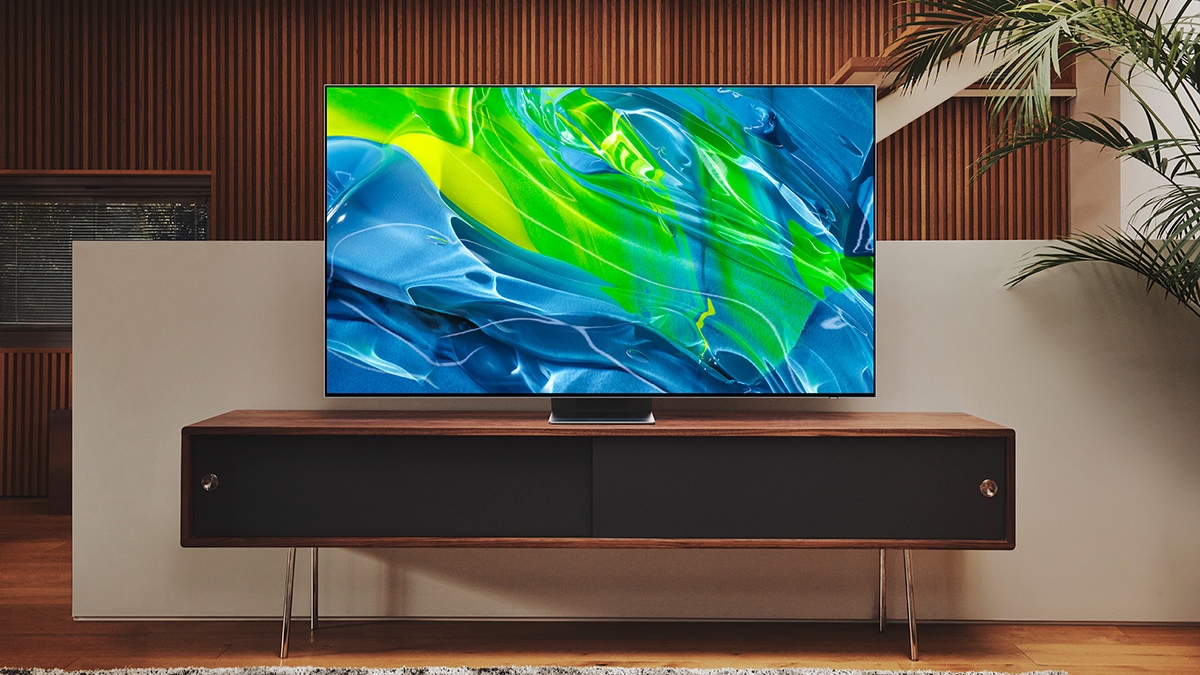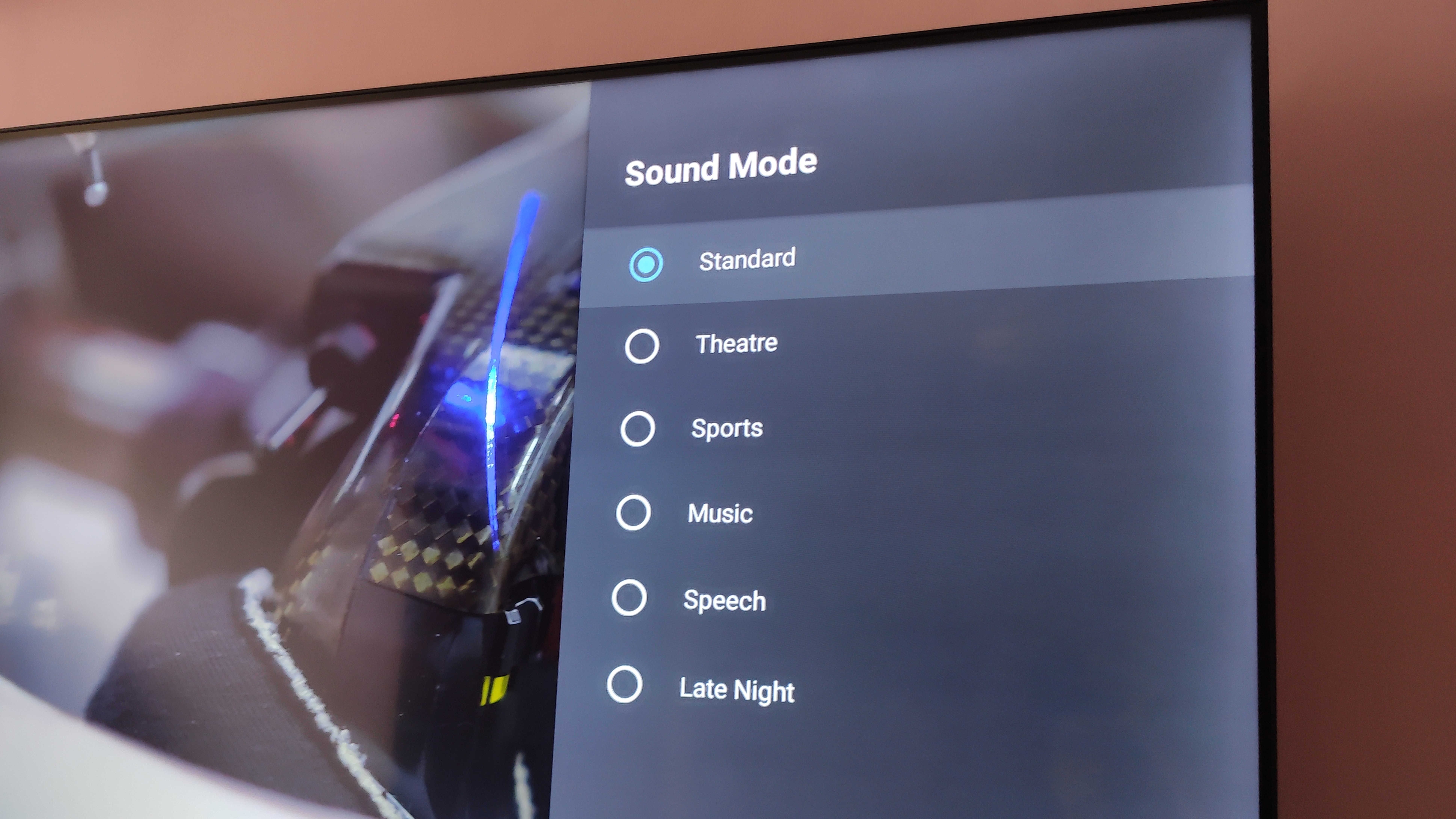Your TV's sound modes explained – from Standard to Movie to Sport
It’s not just in the name

If you’ve ever scrolled through your TV settings, you’ve probably noticed under ‘Sound’ a load of words like ‘Standard’, ‘Movie/Cinema’, ‘Music’ and wondered what the difference is between them. Does it mean that you should choose Sports while watching sports? Music while listening to music? Well, this is generally what TV companies aim to do with these, although they don’t always succeed.
It’s worth noting that these sound options are for the built-in sound systems within the TV itself. The best TVs will not only focus on the picture but also aim to have decent built-in sound. OLED TVs from Sony are often the best on the market for built-in sound, with the Sony A80L being a particular highlight in recent years.
Now, some of these sound settings are obvious, with ‘Movie’ typically being a great choice when you’re watching movies. On some TVs, the difference between the varying sound modes isn’t very obvious, often thanks to tinny speakers, and these TVs could often benefit from one of the best soundbars. But for some people, a soundbar is not an option, whether that be due to lack of space or even personal preference (some soundbars are pretty ugly), so these people rely on the built-in TV speakers.
So, let’s explore what these different sound modes mean and what sets them apart from one another.
Standard
Standard is just what it says - the standard TV sound mode. This is a balanced mode that doesn’t favor bass, treble or voice channels and delivers the sound in the most ‘normal’ format. If you are looking for the most basic setting, ‘Standard’ is the go-to. This is the sound mode that you’d often use for standard TV broadcasts or if you just want a decent, neutral sound.
However, as it does not enhance any particular channel, ‘Standard’ can often be a fairly dull setting. Speech in particular is a problem within this setting and can often be less clear than other sound modes as it finds itself lost within the mix.
Movie/Cinema
The name for this sound mode varies depending on what TV you own but generally it goes by ‘Movie’ or ‘Cinema’. This is the setting that is optimized for watching movies and often adds in more bass and treble to give a much bolder sound. On TVs that have great built-in sound, like the Sony A95K, the ‘Cinema’ setting will often even give a level of ‘virtual’ surround sound effects.
Sign up for breaking news, reviews, opinion, top tech deals, and more.
More often than not, this is the best sound option. It’s more dynamic, punchy and just generally louder than most. Again, dialogue is not the priority here, but it is better than the speech levels found within ‘Standard’ mode.

Sports
‘Sports’ mode places a lot of emphasis on dialogue. This is due to the fact that commentary is often the main thing that you hear while watching a sports broadcast, so this mode brings speech to the forefront whilst reducing bass and treble levels. It will generally still have a wider sound than ‘Standard’ but not quite the level of ‘Movie’.
Although an improvement on dialogue levels, ‘Sports’ generally is not a sound mode you should use. It doesn’t have the balance of other sound modes and in a lot of cases, can even sound tinier, limited by the way it decides to try and balance different sound levels.
Music
This mode closely resembles ‘Movie’ mode by taking a more dynamic approach to its balance of levels, adding more bass and treble again as it is optimized for music. Although you generally won’t listen to music on your TV, this setting does give the option to you if you are going to listen to music-focused content through your TV.
Generally, this mode shares a lot of similarities with ‘Movie’ and actually doesn’t do them any better. Yes, it will be a good choice if you’re watching Glastonbury or live-streaming a concert, but in real terms ‘Movie’ will still give you the best balance.
Game
Much like its picture counterpart, ‘Game’ sound mode aims to strip back a lot of the extra features found in other sound modes in order to be as accurate as possible during intense moments within video games. It will aim to reduce lag between audio and video within the game itself. In terms of audio quality, it sits at a similar level to ‘Cinema’, still aiming for an immersive sound experience.
Although not the most common sound mode, ‘Game’ can be useful while you’re playing video games. But ultimately ‘Movie’ and maybe even ‘Standard’, which provides a good, neutral sound, are still the best bet.

Other sound modes
Varying TV manufacturers will sometimes include sound modes or enhancements not found on other TVs. LG has incorporated two of these sound modes within its TVs - ‘Clear Voice’ and ‘AI Sound Pro’, the latter of which we demoed in our LG C3 review. The TV will use AI technology to improve the sound, dynamically raising overall volume levels and enhancing surround sound effects, and with the C3 we found that AI Sound Pro was the mode ‘that works best for most content’, despite the TV’s average speakers.
The ‘Clear Voice’ setting within LG TVs can also be found in a lot of other TVs, usually another name like ‘Dialogue enhancer’ or ‘Amplify’. This focuses solely on improving the dialogue within the content and although helpful, it generally has a negative effect on the overall sound and should be reserved for very dialogue-heavy content like documentaries.
Conclusion
Ultimately, TV speakers can only do so much in comparison to soundbars or surround sound systems, but the best TVs for sound will make the most of their sound modes and aim to give the most immersive experience possible. With more and more TVs including ‘virtual’ Dolby Atmos to emulate the best Dolby Atmos soundbars and create a ‘virtual’ surround sound experience, there are plenty of other settings you can tweak in order to get the most out of your built-in TV speakers, but these TV sound modes can be a good basis to work from.
You might also like
- How to make your TV sound better
- Sony A95L hands-on - a TV that's sure to have great sound
- LG CS review - impressive built-in TV audio

James is the TV Hardware Staff Writer at TechRadar. Before joining the team, he worked at a major UK based AV retailer selling TV and audio equipment, where he was either telling customers the difference between OLED and QLED or being wowed by watching a PS5 run on the LG 65G2. When not writing about the latest TV tech, James can be found gaming, reading, watching rugby or coming up with another idea for a novel.